Vaser-Liposuction in United Arab Emirates
Search and Compare the Best Clinics and Doctors at the Lowest Prices for Vaser-Liposuction in United Arab Emirates
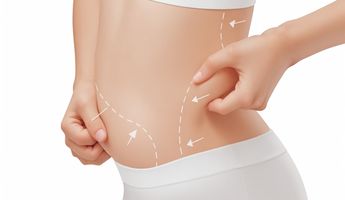
Find the best clinics for Vaser-Liposuction in United Arab Emirates
No clinics available
Thailand offers the best prices Worldwide
Price: $ 236

- Home
- United Arab Emirates
Compare Before & After Photos of _procedure_photos.phpVaser-Liposuction

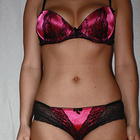
Front view

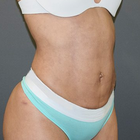
Half-side view
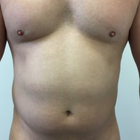

Front view
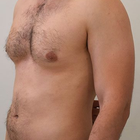
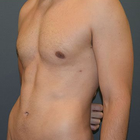
Half-side view
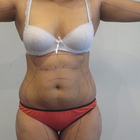

Front view
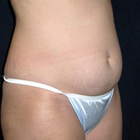
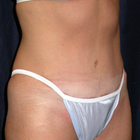
Half-side view
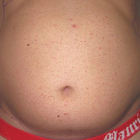

Front view
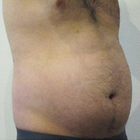
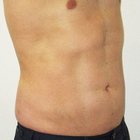
Half-side view
WHY US?
At Medijump, we're making medical easy. You can search, compare, discuss, and book your medical all in one place. We open the door to the best medical providers worldwide, saving you time and energy along the way, and it's all for FREE, no hidden fees, and no price markups guaranteed. So what are you waiting for?

Free

Best Price

Widest Selection

Risk-Free
What you need to know about Vaser-Liposuction in United Arab Emirates
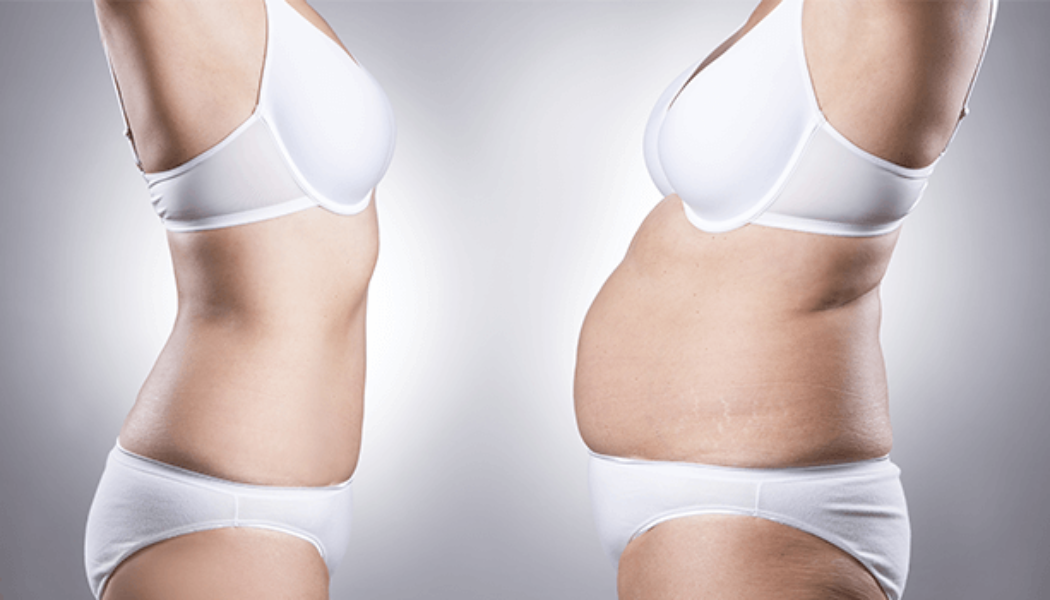
Vaser liposuction, also referred to as Vaser Lipo for short, is a type of cosmetic treatment performed to change the contours and shape of the body by eliminating stubborn fat deposits. Vaser stands for Vibration Amplification of Sound Energy Resonance, which is a specialized ultrasound technology that sends out ultrasonic frequency waves to break down fat cells from desired areas of the patient. Once the fat cells have been broken down, the surgeon can perform the liposuction part of the procedure, which is removing excess fat through a suction process.
Vaser Liposuction has become increasingly popular because the specialized ultrasound technology increases the accuracy of the procedure and minimizes damage to the surrounding tissue, which results in less bruising and pain compared to traditional liposuction. Also, since the fat cells are specifically targeted, the result is much more sculpted and smoother than traditional liposuction. Vaser Liposuction can be performed in many areas of the body, including the abdomen, back, arms, flanks, neck, thighs, calves, ankles, hips, buttocks, and under the chin.
Like other liposuction techniques, it is important to note that Vaser Liposuction is not a weight loss solution. The procedure is intended to contour the body, reduce stubborn excess fat, and reveal muscle tone underneath the fat. You must already be healthy and within your target weight before you consider undergoing this procedure. It
What does a Vaser-Liposuction Procedure Involve?
To begin the procedure, your surgeon injects a saline-anesthetic solution mixture or tumescent solution directly into treatment areas. This solution is used to expand the fat compartment and tightens small blood vessels. It also helps to start the breakdown of the fat cells and protects other tissues. Tiny incisions are then created in the targeted area to insert the Vaser ultrasonic probes. The vibration from the ultrasound will break down the fat. Once the fat is broken down, your surgeon will use a small cannula to remove the fat cells and liquid. Because the fat is broken down with the ultrasound, the fat extraction with the liposuction cannula is easier and less traumatic than in traditional liposuction.
Vaser Liposuction can be carried out under local anesthetic with minimal oral sedation, general anesthetic, or intravenous sedation. If the procedure is performed under local anesthesia, you may feel slight pinching and pressure when the liposuction part is performed.
How Long Should I Stay in United Arab Emirates for a Vaser-Liposuction Procedure?
Vaser Liposuction takes around 2 to 5 hours to complete. After the procedure, you may have to stay in the hospital overnight if general anesthesia is used. However, if local anesthesia is used you should be able to leave the hospital on the same day once the effects of the anesthetic wear off.
Since your surgeon will schedule follow-up appointments to monitor your healing and remove your stitches, you may need to stay in United Arab Emirates for several days following the surgery. The recommended length of stay in the country is about three to seven days.
What's the Recovery Time for Vaser-Liposuction Procedures in United Arab Emirates?
The recovery period of Vaser Liposuction is typically short, but it depends on your general health and treated area. In general, you should be able to return to work and most of your daily activities within two to seven days. You also need to refrain from exercise or other forms of strenuous activities for about 2 weeks. However, if you have gone through a more extensive procedure, you need to prepare for a longer recovery period. The overall recovery time may take up to 24 days following the Vaser Liposuction.
What sort of Aftercare is Required for Vaser-Liposuction Procedures in United Arab Emirates?
Your surgeon will give you specific post-operative instruction. You must follow all the instructions closely to help you heal quickly and smoothly, as well as to avoid any possible complications. It is important that you rest as much as possible during the first few days. You may feel some pain and discomfort, but your surgeon will prescribe pain medication to help manage the discomfort.
It is important that you maintain a healthy lifestyle by following a healthy diet and exercising regularly to keep the results of your Vaser Liposuction. While mild weight fluctuations will go unnoticed, significant weight gain will become noticeable. Therefore, have a well-balanced diet, avoid too many sweets, and stay away from fast food.
What's the Success Rate of Vaser-Liposuction Procedures in United Arab Emirates?
Approximately 90% of women and men who have gone through Vaser Liposuction reported having achieved their target. The results of the procedure may be seen immediately, but the most significant improvement will appear in 6 to 8 weeks following the procedure. It may take about 6 months to achieve the final results.
Again, your new look will only remain if you take care of yourself. The results will not be permanent if you do not stick to an active and healthy lifestyle. The procedure is designed to give you a little boost and to get rid of persistent fat that you cannot remove easily through a healthy diet and exercise.
While risks and side effects of Vaser Liposuction rarely occur, it is best that you are aware of them. The risks and side effects are:
- The ultrasound device may burn your skin and tissues.
- Skin discolorations.
- Skin from the affected area may be wavy, dimpled, or saggy.
- The formation of scar tissue.
- Swelling.
- The remaining fat cells can expand.
- To further minimize the risks, make sure you choose a skilled and experienced surgeon.
Are there Alternatives to Vaser-Liposuction Procedures in United Arab Emirates?
If you do not want to undergo Vaser Liposuction or you are not an ideal candidate for the procedure, you can opt for the nonsurgical alternatives:
- CoolSculpting works by freezing stubborn fat cells in certain areas of the body. The freezing temperature can destroy fat cells permanently. This type of procedure can remove fat cells from certain areas of the body, particularly belly fat, back fat, love handles, arm fat, or a double chin.
- Sculpsure uses a laser beam to heat fat cells until they become irreversibly damaged. This procedure is very quick and requires almost no downtime.
Whilst the information presented here has been accurately sourced and verified by a medical professional for its accuracy, it is still advised to consult with your doctor before pursuing a medical treatment at one of the listed medical providers
No Time?
Tell us what you're looking for and we'll reachout to the top clinics all at once
Enquire Now

Popular Procedures in United Arab Emirates
Prices Start From $111

Prices Start From $120

Prices Start From $931

Prices Start From $76

Recommended Medical Centers in United Arab Emirates for procedures similar to Vaser-Liposuction

- Interpreter services
- Translation service
- Religious facilities
- Medical records transfer
- Medical travel insurance
- Health insurance coordination
- TV in the room
- Safe in the room
- Phone in the room
- Private rooms for patients available

- Interpreter services
- Translation service
- Religious facilities
- Medical records transfer
- Medical travel insurance
- Health insurance coordination
- TV in the room
- Safe in the room
- Phone in the room
- Private rooms for patients available

- Interpreter services
- Translation service
- Religious facilities
- Medical records transfer
- Medical travel insurance
- Health insurance coordination
- TV in the room
- Safe in the room
- Phone in the room
- Private rooms for patients available

- Interpreter services
- Translation service
- Religious facilities
- Medical records transfer
- Medical travel insurance
- Health insurance coordination
- TV in the room
- Safe in the room
- Phone in the room
- Private rooms for patients available

- Interpreter services
- Translation service
- Religious facilities
- Medical records transfer
- Medical travel insurance
- Health insurance coordination
- TV in the room
- Safe in the room
- Phone in the room
- Private rooms for patients available

- Interpreter services
- Translation service
- Religious facilities
- Medical records transfer
- Medical travel insurance
- Health insurance coordination
- TV in the room
- Safe in the room
- Phone in the room
- Private rooms for patients available

- Interpreter services
- Translation service
- Religious facilities
- Medical records transfer
- Medical travel insurance
- Health insurance coordination
- TV in the room
- Safe in the room
- Phone in the room
- Private rooms for patients available

- Interpreter services
- Translation service
- Religious facilities
- Medical records transfer
- Medical travel insurance
- Health insurance coordination
- TV in the room
- Safe in the room
- Phone in the room
- Private rooms for patients available

- Interpreter services
- Translation service
- Religious facilities
- Medical records transfer
- Medical travel insurance
- Health insurance coordination
- TV in the room
- Safe in the room
- Phone in the room
- Private rooms for patients available

- Interpreter services
- Translation service
- Religious facilities
- Medical records transfer
- Medical travel insurance
- Health insurance coordination
- TV in the room
- Safe in the room
- Phone in the room
- Private rooms for patients available
Vaser-Liposuction in and around United Arab Emirates
About the United Arab Emirates
The United Arab Emirates consists of seven emirates and they are Dubai, Abu Dhabi, Sharjah, Ajman, Ras al-Khaimah, Fujairah, and Umm al-Quwain. Abu Dhabi is the richest Emirates due to its oil fields. The UAE population is close to 10 million people.
Shopping is often considered to be the most popular tourist activity in the UAE, certainly for Dubai and Abu Dhabi. there is no denying that going to a mall or souk is a great way of soaking up the local culture, Low prices are often due to the low rate of 5% VAT. There are various shopping festivals throughout the year, especially in Dubai and Abu Dhabi.
The UAE has become a worldwide destination for medical tourists due to its wide range of state-of-the-art technology, affordable treatments, and highly specialized doctors. UAE has already witnessed a sizeable increase in medical tourists who are drawn to the country for treatments ranging from major surgeries to rehabilitation and cosmetic corrections.
The country has been focusing on increasing its healthcare infrastructure in terms of quality as well as quantity, in line with its global aspirations for medical tourism According to Medical Tourism statistics, UAE ranks in 5th place, The country has close to 40 hospitals when compared to only having 7 in 1970. The Government has mandated all companies to provide all their employees with health insurance
In the United Arab Emirates medical education and research foundations such as Al Jalila Foundation, Centre of Arab Genomic Studies, Red Crescent Society of UAE, and Sahi School Health Programme aim to provide the best hospitals and create the best-skilled professionals in the country. With high-quality hospitals such as American Hospital Dubai, Lifeline Hospital, Emirates Hospital, Rashid Hospital, and others, Dubai caters to ailments such as Ophthalmology, Orthopaedic, Rheumatology, Dermatology, Cosmetic and Plastic surgery.
Here are three good reasons why the UAE is the best place to go for medical tourism.
-
The UAE has over 200 JCI-Accredited Hospitals and Clinics.
-
The treatment modules, both surgical and non-surgical are cutting edge and certified.
-
UAE has the best post-operative care in this part of the world.
Popular parts of the UAE
This nation is a fascinating fusion of the contemporary world and deeply rooted Islamic customs, creating a unique cultural tapestry that is a delight to explore. There are numerous notable structures that dot the landscape, beckoning those with an adventurous spirit to embark on unforgettable tours and soak in the rich architectural heritage of the region. The presence of botanical gardens enhances the country's natural beauty, providing tranquil spots amidst the rush of city life where one can take a leisurely stroll, enjoy a picnic, or simply sit and watch the world go by.
For those seeking an adrenaline rush, the country does not disappoint with its array of world-class amusement parks. These colorful wonderlands offer high-octane roller coasters, immersive virtual reality games, and lively entertainment shows which are bound to delight children and adults alike. In contrast, the country's stunning mosques stand as serene symbols of its deep religious underpinnings; their intricate design, ornate calligraphy, and contemplative atmosphere invite visitors to marvel at their grandeur and gain a deeper appreciation for the Islamic culture.
-
Burj Khalifa- Is the tallest building in the world at over 800 meters, and is one of the most impressive sights in Dubai. Tourists can go up to the 124th and 125th floors of the Burj Khalifa. These floors have a circular observation deck and the panoramic view from here is a sight to behold and the view stretches from sea to desert.
-
Burj Al Arab is best known for being the only 7-star hotel in Dubai and is located in the Burj Khalifa building
-
Sheikh Zayed Grand Mosque is one of the most beautiful attractions in Abu Dhabi and is an architectural masterpiece. The mosque is made of marble, and the walls and floors are embedded with colorful stones depicting flowers.
-
Ferrari World in Abu Dhabi is a must-visit attraction. The Ferrari-themed park is home to the fastest roller coaster in the world, Formula Rossa, which accelerates to 240km/hr in as short as five seconds.
-
The Palm Jumeirah is the biggest artificial island in the world and ensures that you visit one of its high-end restaurants and bars or stay in one of its 5-star hotels,
Weather and Climate in the UAE
The winter months of December through February offer a pleasantly warm climate in this region, with temperatures averaging between 24 °C and 26 °C. There are times, particularly in January, when cool northern air fronts make the days chilly and windy.
Scorching heat characterizes the summer season, from May to September, with daytime temperatures soaring between 38 °C and 42 °C. Warm winds from the Persian Gulf sweep in, carrying humidity from the sea. This makes April and October quite hot as well, with peaks around 33/36 °C. During the most intense summer days, temperatures can skyrocket to 47/48 °C along the country's splendid coastline.
The country experiences strong winds all through the year, but they become particularly forceful in the springtime. These winds occasionally lead to sand and dust storms, blanketing the landscape in a desert haze.
Getting around in UAE
The UAE boasts some of the world's most bustling airports with airplanes launching into the skies every five minutes. Out of all these, Terminal four of Dubai International Airport stands out as the busiest.
Travelling within the city is made simple with Dubai's extensive five metro line service. It serves as an excellent mode of transport to explore the city, offering easy access to a majority of landmarks and sought-after locations in Dubai.
Visitors also have the option of renting a luxury automobile for a personal driving experience around the city. However, before getting behind the wheel, ensure you possess an international driving license and the necessary insurance documentation as mandated by UAE's laws and guidelines. Considered the safest mode of transportation in the UAE, taxis are widely available. Tourists have two options: simply hailing one on the street or conveniently booking through a smartphone taxi app.
Tourist visas in the UAE
You can get a non-extendable visit visa or a tourist visa for 30 days or 90 days. Many job seekers use visitor visas to find work and convert their visitor visa to a work visa during their stay. Citizens of GCC countries and the European Union, USA, and the UK, Canada, Russia, China, Australia, and many other countries can get a visa on arrival. However, all passports must be valid for at least six months from the date of entry.
Visa on Arrival:
The visa on arrival facility is a convenient option for eligible citizens, eliminating the need for pre-arranged visas. Upon arrival at a UAE airport, simply proceed to the immigration counter, where your passport will be stamped with a visa.
Visa Conversion for Employment:
If you successfully find employment during your stay on a visitor visa, you can initiate the process of converting your visa to a work visa. This process typically involves sponsorship from your employer and may require additional documentation.
Additional Information
-
Local Currency: The currency of the UAE is the Dirhams, abbreviated as DH or Dh. Each dirham is further simplified into 100 fils. There are currency notes of various denominations ranging from Dh 5 to Dh 1000. The currency features Arabic on the front and English on the back. One US dollar will fetch you 3.67 dirhams and the rate does fluctuate.
-
Money and Payment: All retail businesses and restaurants accept credit cards and cash. ATMs and currency exchanges are conveniently located across the country. There are bank counters in various malls that will readily exchange your currency. Tipping is only at ten percent of the Service or good charges and is optional.
-
Local Language: UAE is very cosmopolitan and therefore the local population understands a lot of languages including English. There are also translator services available everywhere at cheap rates. Arabic is a widely spoken language throughout the UAE.
-
Local culture and religion: Islam is the state religion. However, society is very diverse and it is one of those countries in the world where the migrant population is 80% plus which far exceeds the local nationals. Any person of any nationality, whether based overseas or a resident of Dubai, can purchase in Dubai's freehold property market in designated areas
-
Public holidays: Ramadhan is the biggest festival and Shops and malls are beautifully decorated all through the thirty days of fasting. The other public holidays is the Islamic New Year, the Prophet’s Birthday, and the King’s Coronation day. People also celebrate other festivals like the Hindu festival of Diwali and the Chinese New Year in the spirit of humanity and brotherhood.
Popular Searches
- Plastic Surgery in Thailand
- Dental Implants in Thailand
- Hair Transplant in Thailand
- Breast Augmentation Thailand
- Gastric Sleeve in Thailand
- Gender Reassignment Surgery in Thailand
- Laser Hair Removal in Bangkok
- Botox in Bangkok
- Dermatology in Bangkok
- Breast Augmentation in Bangkok
- Coolsculpting in Bangkok
- Veneers in Turkey
- Hair Transplant in Turkey
- Rhinoplasty in Turkey
- Stem Cell Therapy in Mexico
- Rhinoplasty in Mexico
- Liposuction in Mexico
- Coolsculpting in Tijuana
- Rhinoplasty in Korea
- Scar Removal in Korea
- Gastric Sleeve in Turkey
- Bone Marrow Transplant in India
- Invisalign in Malaysia
- Plastic Surgery in the Dominican Republic
- Tummy Tuck in the Dominican Republic
- Plastic and Cosmetic Surgery in Poland
- Rhinoplasty in Poland
- Hair Implant in Poland
- Dental Implants in Poland
- IVF in Turkey